zingerone
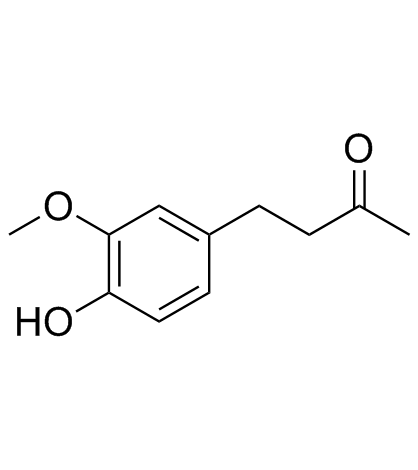
zingerone structure
|
Common Name | zingerone | ||
|---|---|---|---|---|
| CAS Number | 122-48-5 | Molecular Weight | 194.227 | |
| Density | 1.1±0.1 g/cm3 | Boiling Point | 323.0±27.0 °C at 760 mmHg | |
| Molecular Formula | C11H14O3 | Melting Point | 40-41 °C(lit.) | |
| MSDS | Chinese USA | Flash Point | 123.7±17.2 °C | |
Use of zingeroneZingerone (Vanillylacetone) is a nontoxic methoxyphenol isolated from Zingiber officinale, with potent anti-inflammatory, antidiabetic, antilipolytic, antidiarrhoeic, antispasmodic and anti-tumor[3] properties[1]. Zingerone alleviates oxidative stress and inflammation, down-regulates NF-κB mediated signaling pathways[2]. Zingerone acts as an anti-mitotic agent, and inhibits the growth of neuroblastoma cells[3]. |
| Name | zingerone |
|---|---|
| Synonym | More Synonyms |
| Description | Zingerone (Vanillylacetone) is a nontoxic methoxyphenol isolated from Zingiber officinale, with potent anti-inflammatory, antidiabetic, antilipolytic, antidiarrhoeic, antispasmodic and anti-tumor[3] properties[1]. Zingerone alleviates oxidative stress and inflammation, down-regulates NF-κB mediated signaling pathways[2]. Zingerone acts as an anti-mitotic agent, and inhibits the growth of neuroblastoma cells[3]. |
|---|---|
| Related Catalog | |
| Target |
NF-κB[3] |
| In Vitro | Zingerone is a nontoxic methoxyphenol with potent anti-inflammatory, antidiabetic, antilipolytic, antidiarrhoeic, antispasmodic properties[1]. Zingerone (0-2 mM) decreases neruoblastoma cell survival[3]. Zingerone (0-2 mM) reduces cyclin D1 expression, increases cleavage of caspase-3 and PARP-1 in BE(2)-M17 cells[3]. |
| In Vivo | Zingerone (50, 100 mg/kg, p.o. daily for 21 days) protects against alloxan-induced diabetes via alleviation of oxidative stress and inflammation in rat[2]. Zingerone (10 mg/kg, i.p.) inhibits tumor progression through mitotic arrest, failure of cell division, and stimulation of apoptosis[3]. |
| References |
| Density | 1.1±0.1 g/cm3 |
|---|---|
| Boiling Point | 323.0±27.0 °C at 760 mmHg |
| Melting Point | 40-41 °C(lit.) |
| Molecular Formula | C11H14O3 |
| Molecular Weight | 194.227 |
| Flash Point | 123.7±17.2 °C |
| Exact Mass | 194.094299 |
| PSA | 46.53000 |
| LogP | 0.64 |
| Vapour Pressure | 0.0±0.7 mmHg at 25°C |
| Index of Refraction | 1.526 |
| Storage condition | 2-8°C |
CHEMICAL IDENTIFICATION
HEALTH HAZARD DATAACUTE TOXICITY DATA
|
| Precursor 8 | |
|---|---|
| DownStream 7 | |
| HS Code | 2914509090 |
|---|---|
| Summary | HS:2914509090 other ketones with other oxygen function VAT:17.0% Tax rebate rate:9.0% Supervision conditions:none MFN tariff:5.5% General tariff:30.0% |
|
Inhibition by capsaicin and its related vanilloids of compound action potentials in frog sciatic nerves.
Life Sci. 92(6-7) , 368-78, (2013) Although capsaicin not only activates transient receptor potential vanilloid-1 (TRPV1) channels but also inhibits nerve conduction, the latter action has not yet been fully examined. The purpose of th... |
|
|
Fenugreek extract as an inducer of cellular death via autophagy in human T lymphoma Jurkat cells.
BMC Complement Altern. Med. 12 , 202, (2012) Drugs used both in classical chemotherapy and the more recent targeted therapy do not have cancer cell specificity and, hence, cause severe systemic side effects. Tumors also develop resistance to suc... |
|
|
Targeting antioxidative signal transduction and stress response system: control of pathogenic Aspergillus with phenolics that inhibit mitochondrial function.
J. Appl. Microbiol. 101(1) , 181-9, (2006) The aim of this study was to show whether antioxidative response systems are potentially useful molecular targets for control of Aspergillus fumigatus and Aspergillus flavus. Selected phenolic agents ... |
| UNII-4MMW850892 |
| Vanillyl acetone |
| 4-(4-Hydroxy-3-methoxyphenyl)-2-butanone |
| 4-(4-hydroxy-3-methoxyphenyl)butan-2-one |
| Zingiberone |
| 2-Butanone, 4-(4-hydroxy-3-methoxyphenyl)- |
| EINECS 204-548-3 |
| Vanillylacetone |
| MFCD00048232 |
| 3-Methoxy-4-hydroxybenzylacetone |
| 2-Butanone, 4- (4-hydroxy-3-methoxyphenyl)- |
| Zingberone |
| zingerone |
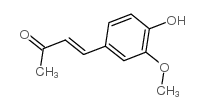 CAS#:1080-12-2
CAS#:1080-12-2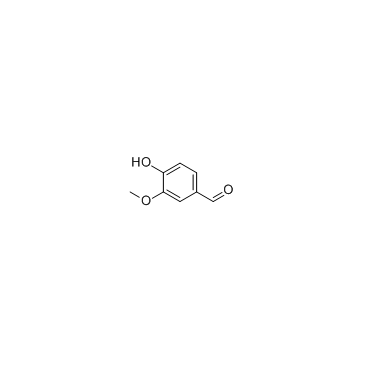 CAS#:121-33-5
CAS#:121-33-5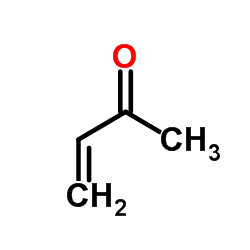 CAS#:78-94-4
CAS#:78-94-4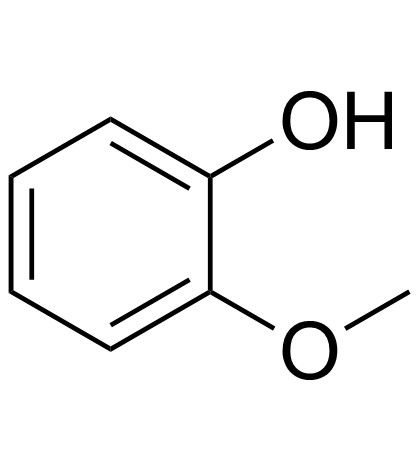 CAS#:90-05-1
CAS#:90-05-1 CAS#:61152-59-8
CAS#:61152-59-8 CAS#:39886-78-7
CAS#:39886-78-7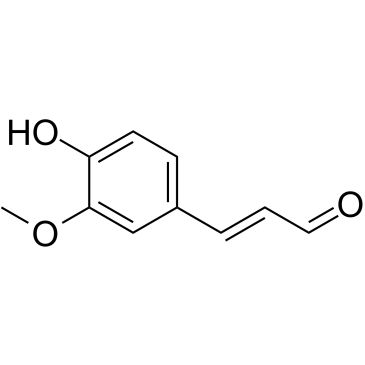 CAS#:458-36-6
CAS#:458-36-6![(2E)-3-[4-[[tert-butyldimethylsilyl]oxy]-3-methoxyphenyl]acrylaldehyde Structure](https://image.chemsrc.com/caspic/436/290820-47-2.png) CAS#:290820-47-2
CAS#:290820-47-2 CAS#:39728-80-8
CAS#:39728-80-8 CAS#:77334-06-6
CAS#:77334-06-6 CAS#:77398-90-4
CAS#:77398-90-4![4-[3-Methoxy-4-[(trimethylsilyl)oxy]phenyl]-2-butanone structure](https://image.chemsrc.com/caspic/070/56700-87-9.png) CAS#:56700-87-9
CAS#:56700-87-9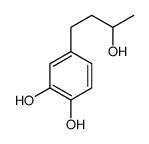 CAS#:61152-58-7
CAS#:61152-58-7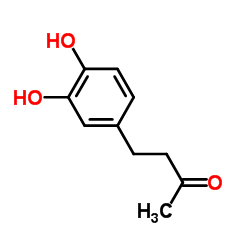 CAS#:61152-62-3
CAS#:61152-62-3 CAS#:6302-60-9
CAS#:6302-60-9
